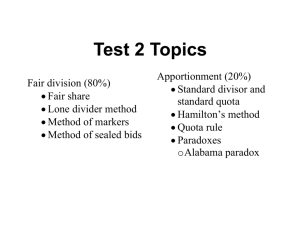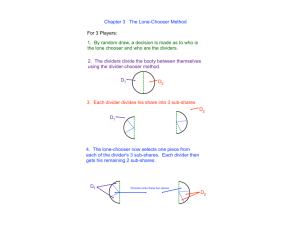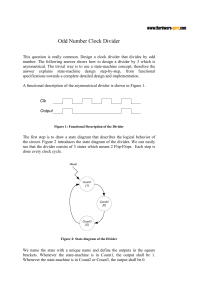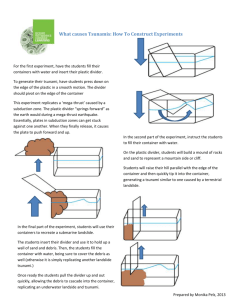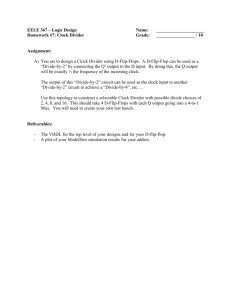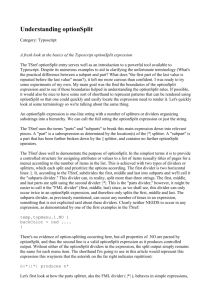MA 1115 Lecture 13 - The Lone Chooser Method Monday, February
advertisement
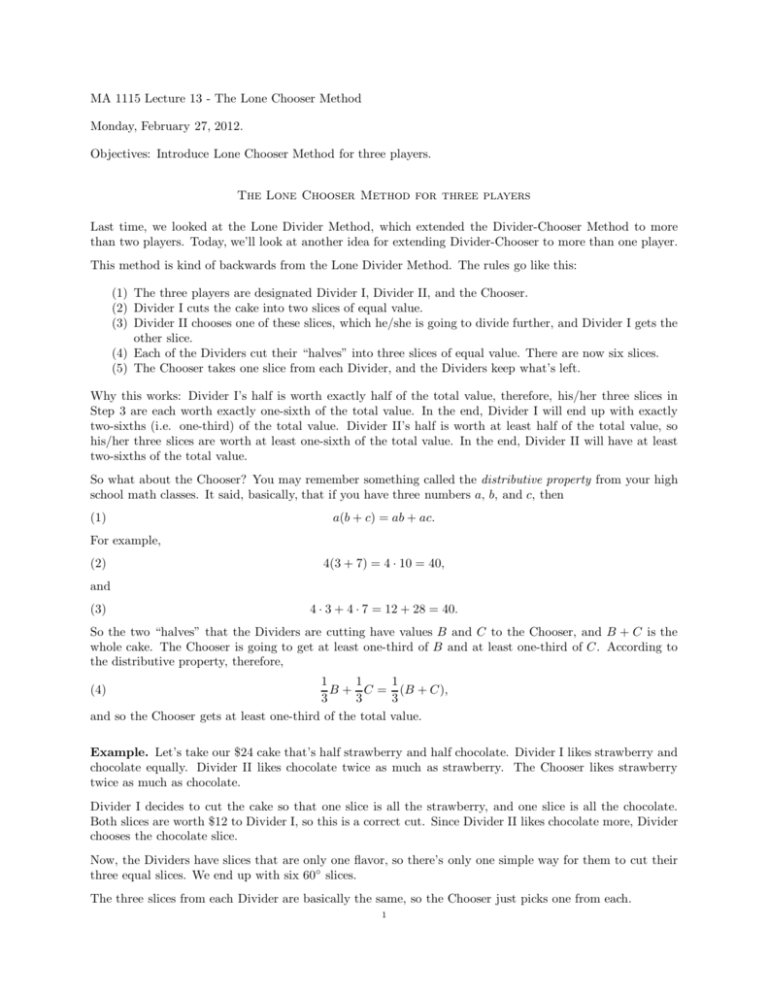
MA 1115 Lecture 13 - The Lone Chooser Method Monday, February 27, 2012. Objectives: Introduce Lone Chooser Method for three players. The Lone Chooser Method for three players Last time, we looked at the Lone Divider Method, which extended the Divider-Chooser Method to more than two players. Today, we’ll look at another idea for extending Divider-Chooser to more than one player. This method is kind of backwards from the Lone Divider Method. The rules go like this: (1) The three players are designated Divider I, Divider II, and the Chooser. (2) Divider I cuts the cake into two slices of equal value. (3) Divider II chooses one of these slices, which he/she is going to divide further, and Divider I gets the other slice. (4) Each of the Dividers cut their “halves” into three slices of equal value. There are now six slices. (5) The Chooser takes one slice from each Divider, and the Dividers keep what’s left. Why this works: Divider I’s half is worth exactly half of the total value, therefore, his/her three slices in Step 3 are each worth exactly one-sixth of the total value. In the end, Divider I will end up with exactly two-sixths (i.e. one-third) of the total value. Divider II’s half is worth at least half of the total value, so his/her three slices are worth at least one-sixth of the total value. In the end, Divider II will have at least two-sixths of the total value. So what about the Chooser? You may remember something called the distributive property from your high school math classes. It said, basically, that if you have three numbers a, b, and c, then (1) a(b + c) = ab + ac. For example, (2) 4(3 + 7) = 4 · 10 = 40, and (3) 4 · 3 + 4 · 7 = 12 + 28 = 40. So the two “halves” that the Dividers are cutting have values B and C to the Chooser, and B + C is the whole cake. The Chooser is going to get at least one-third of B and at least one-third of C. According to the distributive property, therefore, 1 1 1 B + C = (B + C), 3 3 3 and so the Chooser gets at least one-third of the total value. (4) Example. Let’s take our $24 cake that’s half strawberry and half chocolate. Divider I likes strawberry and chocolate equally. Divider II likes chocolate twice as much as strawberry. The Chooser likes strawberry twice as much as chocolate. Divider I decides to cut the cake so that one slice is all the strawberry, and one slice is all the chocolate. Both slices are worth $12 to Divider I, so this is a correct cut. Since Divider II likes chocolate more, Divider chooses the chocolate slice. Now, the Dividers have slices that are only one flavor, so there’s only one simple way for them to cut their three equal slices. We end up with six 60◦ slices. The three slices from each Divider are basically the same, so the Chooser just picks one from each. 1 MA 1115 Lecture 13 - The Lone Chooser Method 2 Practice Problems 1. From this last example, find the values of the slices that each player got. OK. Same cake and same players as the example, but suppose Divider I cuts the cake like this. Since these slices have the same value to Divider II (or anyone else), it doesn’t really matter which slice Divider II picks. Let’s suppose he/she picks the right slice. 2. Find simple, legal cuts for the two Dividers. 3. Choose two pieces for the Chooser. 4. Find the values for the pieces that the payers get. 60 Answers: 1) Each slice for Divider I is worth 180 ·$12 = $4, Divider I’s two slices are worth $8. Each slice that 60 Divider II has is worth 180 · $16 = $5.33, so Divider II’s slices are worth $10.66 (or $10.67). To the Chooser, 60 60 slice Ia, Ib, and Ic are each worth 180 · $16 = $5.33, and slice IIa, IIb, IIc are each worth 180 · $8 = 2.67, so one of each would be worth $5.33 + $2.67 = $8. 2) Divider I would just cut into 60◦ slices, one of which is 30◦ strawberry and 30◦ chocolate. Divider II likes chocolate twice as much as strawberry, so he/she would cut 90◦ strawberry in one slice, and two 45◦ slices of chocolate. 3) The chooser likes strawberry twice as much as chocolate, so he/she would take the 60◦ all strawberry piece from Divider I, and the 90◦ all strawberry piece from Divider II. 4) Divider I gets two $4 pieces for a total of $8. Divider II gets the two 45◦ chocolate slices each worth $4 for a total of $8. The Chooser gets 150◦ degrees of strawberry altogether worth 150 180 · $16 = $13.33.
